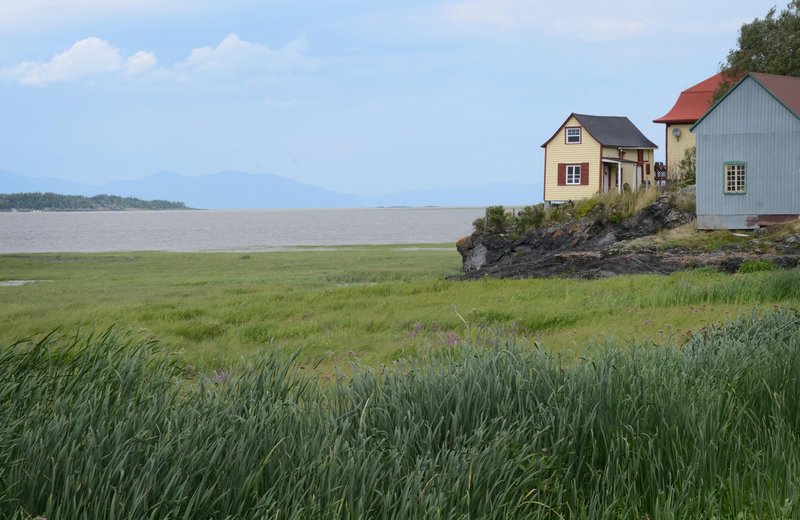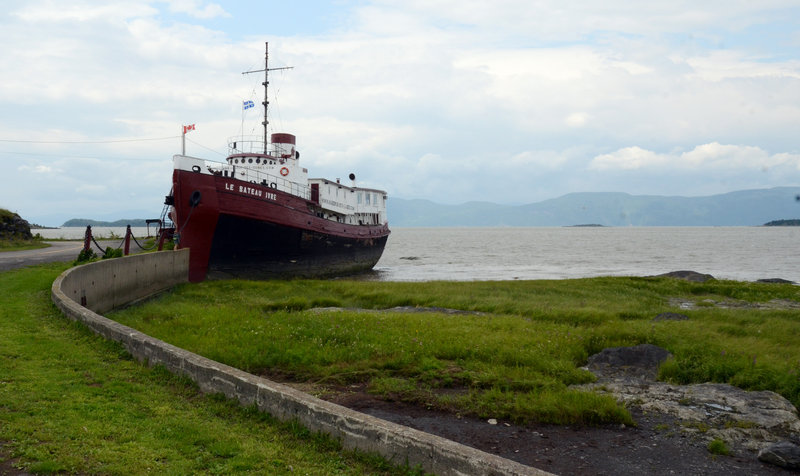ILE-AUX-GRUES, QUEBEC – What a difference a bridge makes.
This rather obvious observation hit home when driving around one Quebec island and cycling another, both close to the shore of the St. Lawrence River but a world apart in their way of life.
First, Ile d’Orleans, a bridge hop from the outskirts of Quebec City. It’s a graceful haven of fine homes, fields of cultivated berries, art studios, collectibles, autumn apple pickers, cider, tourists, gourmet bakery treats, perfect lawns down to the water, maple syrup and bicyclists who look a bit nervous sharing narrow roads with cars, and for good reason.
Then there’s windswept, rather lonely and powerfully lovely Ile-aux-Grues, island of cranes. It’s only a few miles (kilometers) from the shore of the St. Lawrence River, but so disconnected that the island’s children are flown to school and back.
For Quebecers, Ile d’Orleans is the place everybody’s been. Ile-aux-Grues is where everyone has been meaning to go.
So I went, on a ship with a quirky skipper, Jean-Francois Lachance. He fancied himself a standup comedian as he kept up a stream of banter mixed with stories of the archipelago for the scores of passengers. The Lachance family, operator of the cruise company, has been plying these waters since the early 1800s.
In settling on a plan to bike along the St. Lawrence for three days, I had loosely patterned my route on one laid out by Lonely Planet contributor Margo Pfeiff, writing in the Los Angeles Times. When I followed up with her, she offered one piece of advice in particular: “Be sure to have a day to spend on the island.”
Ile-aux-Grues can be reached by a free, 25-minute car ferry until late in the year when the ice comes and the only access is by small planes. But the ferry runs on an erratic schedule, dependent on the tides, making it an iffy proposition for day-trippers. I took the $38 Lachance Cruises round-trip — more than two hours on the boat each way, and close to three hours to explore the island. I brought my bike along.
The 170-passenger vessel first dropped off a large contingent on Grosse Ile, a national historical site that served as a gateway for Irish immigrants in the 1800s and a quarantine camp where typhus sufferers died in horrid conditions. Here the wide river is studded with islands, some owned in whole by the rich, but only Orleans and Grues inhabited year-round.
On Ile-aux-Grues, most passengers climbed into a trolley for a motorized tour that includes a stop at the pride of the island, Fromagerie Ile-aux-Grues, producer of coveted artisanal cheeses and winner of the 2009 Canadian grand prize for medium cheddar.
Others wheeled their bicycles off the boat or used free ones from Lachance and ventured out on a dozen miles (about 20 kilometers) of empty roads through meadows, marshes and farmlands, never losing sight of the river panorama. The island, mostly under a mile (kilometer) wide, claims to offer the largest unspoiled wetland in northeastern North America, with mudflats linking Ile-aux-Grues to even less accessible Ile-aux-Oies, island of geese.
At summer’s end, the island delivered almost complete silence, except for the wind. About 150 people live here year-round, twice that in summer. Homes are pint-sized compared with many on Orleans, but never ordinary, dressed up in bright colors — which is typical in Quebec — and garden rows.
The island’s most curious landmark: a beached 1940s tugboat from New York, now a restaurant offering regional cuisine and a venue for get-togethers.
It’s named Le Bateau Ivre, or the Drunken Boat, after the 19th-century French poem. Arthur Rimbaud’s classic verses, though, speak of a churning watery violence at odds with the tranquil setting of this old red tugboat and the island it now calls home.
Send questions/comments to the editors.




Success. Please wait for the page to reload. If the page does not reload within 5 seconds, please refresh the page.
Enter your email and password to access comments.
Hi, to comment on stories you must . This profile is in addition to your subscription and website login.
Already have a commenting profile? .
Invalid username/password.
Please check your email to confirm and complete your registration.
Only subscribers are eligible to post comments. Please subscribe or login first for digital access. Here’s why.
Use the form below to reset your password. When you've submitted your account email, we will send an email with a reset code.